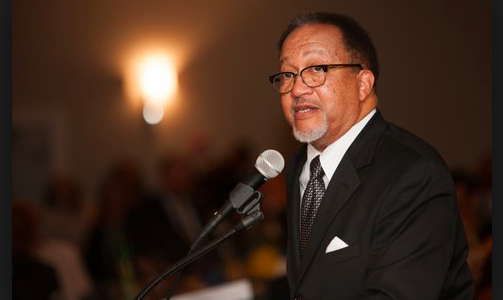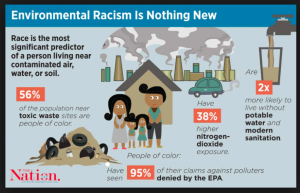
Environmental Racism
Environmental Racism:
“Refers to both the intentional and unintentional disproportionate imposition of environmental hazards on minorities” (Godsil, 395).
Environmental racism is a term that refers to the spatial relationships between environmental hazards and community demographics, in order to determine if inequity exists (Pulido 1). This idea was coined in 1981 by Reverend Benjamin Chavis, Jr., an African-American Civil Rights leader who initially served as an assistant to Martin Luther King, Jr.
In 1986, Chavis published Toxic Waste and Race in the United States of America, which gained national attention as the study revealed the correlation between race and location of toxic waste in the U.S. His study attempted to statistically prove that ethnic and minority groups were categorically exposed to a significantly greater amount of toxic and hazardous waste sites. Chavis also argued that minority groups were excluded systematically from environmental policy making and hazard relief, and his work has spurned a growing movement country-wide to make sure all groups of people have the right to a clean and safe environment.
Godsil, Rachel D. “Remedying Environmental Racism.” Michigan Law Review, vol. 90, no. 2, 1991, pp. 394–427. JSTOR, www.jstor.org/stable/1289559.
Pulido, Laura(2000) Rethinking Environmental Racism: White Privilege and Urban Development in Southern California, Annals of the Association of American Geographers, 90:1, 12-40, DOI: 10.1111/0004-5608.00182